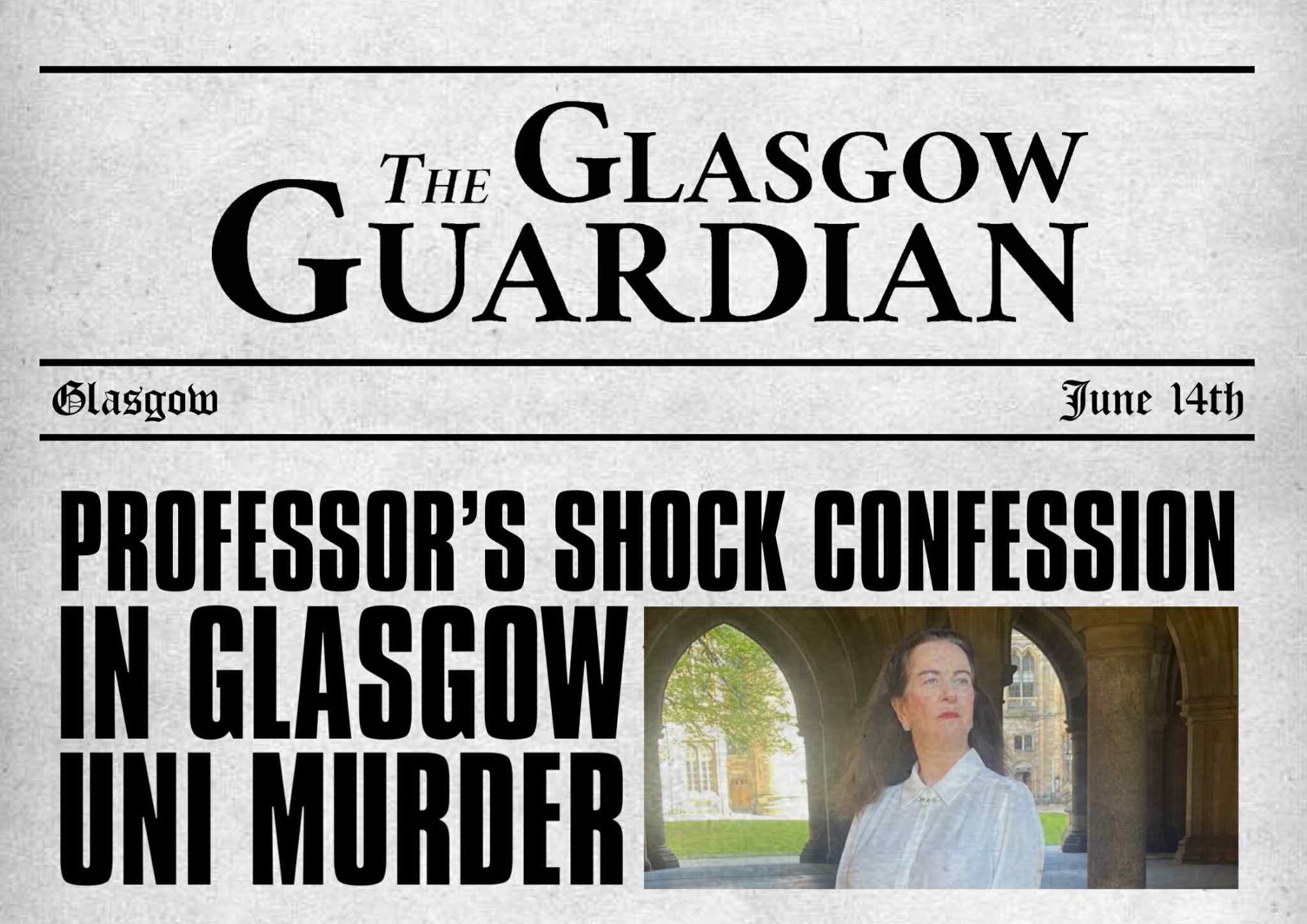To mark the bicentenary of the Royal Scottish Academy in 2026, Heather Sterling takes a road trip. What are the classic characteristics of the arts and crafts movement buildings?

Glasgow to Helensburgh. 32 miles.
We’re watching out for the big five. Though I should say at this point we’re not looking for lions and leopards, but the Scottish architecture big five: corbelled turrets, roses, asymmetry, crow-stepped gables, and wall dormers.
We reach Helensburgh, on the edge of the Gare Loch, at the eleventh hour. A heron takes off into dark, salted air, under lit by harbour lights; spotlit by the moon. The town is marked in the Modern Style (British Art Nouveau), which grew out of the mid 19th century Arts and Crafts movement popularised by the likes of William Morris and James McLaren.
Arts and Crafts was an anti-industrialist movement established to reform what creators saw as a decline in standards as a result of factory creation. It prioritised craft and traditional skills over mass production, and reflected nature, using floral patterns, and natural textures, like wood.
Building on Arts and Crafts, the Modern Style gave these ideas further flight, and in the late 19th century, and early 20th century, Art Nouveau was spreading across the world, taking on different names, like Jugenstil and Successionist, in Germany and Vienna.
Mackintosh
Helensburgh is stamped in the Modern Style. This is partly due to, Charles Rennie Mackintosh and Margaret MacDonald Mackintosh, designing the famous Hill House. This overlooks the town. A trip inside reveals mosaics, stained glass windows, and lamps, with the Glasgow rose. Here we have our first sighting – one of the big five.
Arts and Crafts strongly influenced the Mackintoshes, and designs were characterised with motifs from nature. Bold outlines of roses, stained glass transmutations of tulips, thistles and vines are key. This aesthetic developed a name for itself: The Glasgow Style, which became a core part of the emerging Modern Style.
The artists, designers and architects at the heart of the Glasgow Style were, naturally, based in Glasgow. This influenced the wider, growing, Modern Style, happening across the UK, between the 1890s to about 1914. This group were masters of mediums which the style became known for. Mediums such as wood, glass and stained glass, ceramic, textiles and illustrations were often botanical in subject.
Four of them became so influential, that they inspired the nickname, The Glasgow Four. These were designers and sisters, Margaret and Frances MacDonald, and architects, Charles Rennie Mackintosh, and Herbet MacNair.

Helensburgh Harbour
The harbour reflects not just the Modern Style, but Scottish Baronial too and its jewel is the town hall on Sinclair Street, built in 1887. Scots Baronial came about in the 19th century, drawing on the look of medieval Scottish castles. When searching for the big five, this building has several: it’s asymmetrical (check), and has crow-stepped gables (check check). Corbelled turrets also feature up high (triple check). Corbelled turrets are small overhanging turrets which project outwards and upwards from the walls at the top of a building. They are sometimes called tourelles. While this is a rather fine word which adds a touch of French to our Scottish safari. The use of the word ‘corbelled’ is more useful to describe the gradually protruding, and often decorative, stone work seen below the turret, necessary in supporting it.
Onwards to sight the last of our big five, the wall dormer. Dormers are windowed components of buildings, which project out of sloping roofs, adding interior space and light. A wall dormer has its windowed face as a continuation of the wall, breaking up the horizontal line of the eave, adding character. Wall dormers can be seen on the Peckham’s building, next to the station, at 1 East Princes Street.
Helensburgh to Falls of Falloch. 29 miles.
Driving on the A82 from Helensburgh, towards the Falls of Falloch, you’ll pass the Tarbet Hotel, where you can spot corbelled turrets, crow-stepped gables, and wall dormers. Bonus sightings include crenellated turrets. Continuing up, along the edge of Loch Lomond, you’ll get to the famous Falls of Falloch, with its tempting pools. Cold water is good for the parasympathetic nervous system…
Falls of Falloch to Fortingall. 34 miles.

Further on to Fortingall, you’ll find the bucolic Arts and Crafts village created by James McLaren, with its thatched roofs, brightly coloured doors and eaves, and, in the case of the Fortinghall Hotel, one of the more elaborate doorbells you will ever encounter. Fortingall hides the oldest yew tree in Europe, too, thought to be over 5,000 years old. The Arts and Crafts styles here significantly influenced the Glasgow Style, and if you walk along the lane in Fortingall, there is a wonderful example of undulating slate work where a curved thatched roof might have been.
We’ve sighted all of the big five, and it’s worth dwelling on one which has featured consistently: the crow-stepped gable. Strong trading links in the 16th and 17th centuries, between Britain, Belgium, the Netherlands and Luxembourg, brought Dutch and Flemish immigrants, who introduced new architetural languages, and Flemish stepped gables arrived.
Fortingall to Glasgow. 79 miles.

Driving along the A9, past Birnam and its famous oak, we return to Glasgow, with a bright orange full moon ahead of us. The Glasgow Style lingers in the mind, too, and the moon now looks like a circle of glass, cut into the stars, framed by the forest’s canopy.
Back in town, we head to the Glasgow School of Art. It was built by Charles Rennie Mackintosh, in 1899, and completed in 1909, encapsulating the Modern Style with elements of Scots baronial and Tudor Revival.
Just as Scots baronial borrowed from the medieval Scottish castle aesthetic, the Tudor Revival, drew from English medieval buildings. Elements like leaded glass panes, exposed beams, and jetting – where upper stories overhang the lower ones, creating more interior space – are key clues when sighting Tudor Revival.
The Oriel window is another Tudor feature: a bay-like window which projects from the upper walls and which doesn’t reach the ground, distinguishing it from a bay window, which would. As with corbelled turrets, oriel windows can be decorative because of embellishments on the necessary supporting brackets, the corbels. For the keenest spotters, oriel windows can be spotted in contrasting styles, on the west and east façades of the school.
Art Nouveau and Tudor Revival shared similar epochs, and their contrasting aesthetics used simultaneously, create a striking, and bold duality. A Dorothy Carleton Smyth glass panel, which was luckily not lost in either of the 2014 and 2018 fires, exhibits something of this double act: sinuous and green Art Nouveau font, set against contrasting, right angled cuts of black leaded glass panes.
There we have it: The Big Five; The Glasgow Four, and The One: Nature.










